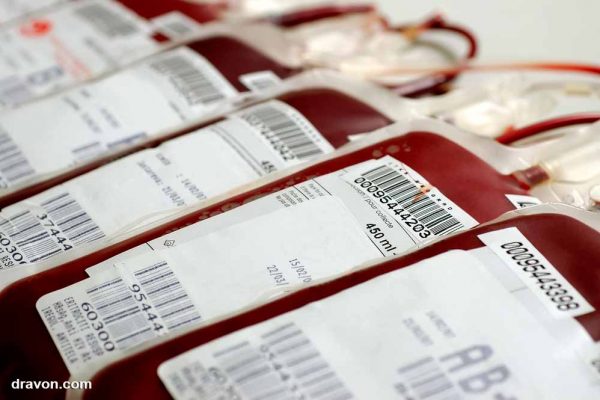Menu

Top 5 Design Tips for RF Welding
Radiofrequency (RF) welding is the process of applying alternating electric fields to dipole thermoplastic materials, which results in the generation of heat that melts the sheets together to form a seal. Advantages of RF welding include reliable production of airtight or watertight seals, short cycles times for low-cost production, and elimination of glues that may contain harmful solvents or may fail over time. These benefits are particularly useful in the healthcare and aerospace industries. Applications include fluid retention, fluid storage, waste collection, blood components, blood handling, IV bags, drug reagents, pressurized bladders, limb positioning, etc.
When designing a bag or container, the user needs, pressure requirements, and cost constraints must be identified and considered prior to the selection of a manufacturing process. The RF welding process is excellent for forming airtight or watertight seals and is a cost-efficient manufacturing method. RF welding, however, limits material choice to polar thermoplastic materials that weld reliably with RF energy. If the bag design is novel or custom, then tooling dies will be needed prior to making production parts. The product must fit within an RF Welding machine that has enough power to deliver the weld area required in the design. In order to fit between the upper and lower welding dies, designs are generally planar (e.g. bag) for processing with RF welding. If three-dimensional features are required for the product, review and discuss the product design with an RF welding manufacturing expert to understand the impact on the tooling dies and how the product could be processed with an RF Welding machine.
In addition to this general design guidance for RF welding, below are the top 5 design tips:
Design Tips
1. Material, material, material …
The first consideration in RF welding is material selection. RF welding can work well with dipole thermoplastic materials. Common RF welding materials include PVC formulations, Saran, polyurethane, PETG, Nylon, and EVA (ethyl vinyl acetate). Popular plastics that are not amenable to RF welding include polypropylene, polyethylene, silicone, and Teflon. Click here to see a table showing the RF weldability of various plastic sheeting materials.

2. Thickness matters …
The minimum thickness sheet that can be welded to another sheet is about 6 mils (.006”), and ideally the sheet thicknesses should be 8 mils or greater to ensure a robust weld. In addition, welding sheets of the same thickness or similar thicknesses helps to ensure a consistent and reliable weld

3. Curves rather than corners …
When designing a product for RF welding, try to avoid sharp corners on the container and use generous radii for geometric transitions. After the perimeter is welded on bags, the bags typically go through a tear-out process to remove it from the plastic sheeting. Sharp corners create stress risers in the material and create tear-out issues, leading to high manufacturing scrap rates (increased cost) and potential failures in the field. In particular, internal sharp corners are especially problematic for potentially failing during tear-out or in use.

4. Port locations …
Ports tubes are the entry and exit points for fluids in a container. Depending on the application, some containers require only one port while others require 2, 4, 6, or 8 ports depending on the application. Each port requires a tube seal over the tube itself as well as a flat weld on both sides of the tube to prevent an adjacent channel leak. For the design, there should not be a discontinuity between the perimeter weld and the tube flat weld at their intersection, and port tubes should be located to allow a sufficient flat weld on each side. Many container designs include a protrusion out from the bag to house the port tube and weld.

5. A word on coatings …
Coatings on materials can play an integral role in product function. However, these coatings can also impact manufacturing processes, especially a process like RF welding that counts on two dipole thermoplastic materials being in direct contact. Therefore, the designer should avoid the use of coatings on the inside surfaces of containers that are to be welded together. These coatings can interfere with the RF welding process or prevent it altogether. The one caveat is if the material substrate is not conducive to RF welding, then an RF-friendly backing or coating can be bonded to the substrate that allows RF welding between the two surfaces.
Dravon Medical’s core competency and expertise is RF welding of custom medical bags. Dravon works hand-in-hand with both medical device manufacturers and design firms, and can provide input on RF welding design considerations such as material choice, thickness, weld strength, size, bag shape including radii, dimensional stability, tool design, etc. In addition, Dravon also offers off-the-shelf bag tooling options (Dravon-owned tools) for use by customers. This option can save on expensive tooling and reduces long lead times. Please see the off-the shelf tooling options for more details.

Dravon has an ISO 13485 certified quality system for the manufacture of medical devices. Our two Class 7 clean rooms are well-suited for the production, assembly, and packaging of high quality custom medical bags. Since the manufacturing of custom medical bags is a specialized production service, Dravon Medical is a cost-efficient option for medical device companies that want to compete in these markets. Dravon works closely with our customers, from product concept through obsolescence, to provide high quality custom medical bags for the customer, end users, and patients.